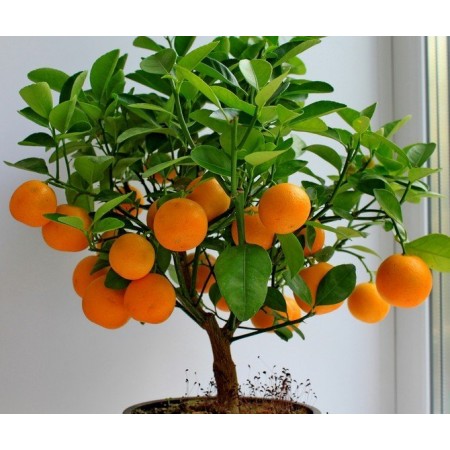Calamondin cultivation

If you have long wanted to plant any citrus plants at home, then it is recommended to pay attention to calamondin. This exotic flower can produce a large number of fruits and has an evergreen crown that will delight you with its graceful appearance. It remains only to figure out how to properly care for this plant, so that it feels at home as comfortable as possible.
Choosing the right place in the house
The best place for calamondine is a well-lit, spacious room where high ceilings will not impede plant growth throughout the year. In its final form, calamondin can reach a meter height, so it will require a large amount of free space.
In terms of lighting, this exotic flower is very fond of the scattered sun rays that must fall on it throughout the year. Like other plants, calamondine does not tolerate direct UV radiation very well, so in the summer it is strictly not recommended to install a flower pot in places where the sun's rays fall. In winter, fluorescent lamps should be installed next to the flowerpot, which will provide it with ultraviolet light after sunset.
As well as lighting, the temperature in the room with calamondine should be maintained at a stable level. The optimal value will be a thermometer from 18 to 24 degrees Celsius during the year (from December you can lower the readings to 16 degrees for a comfortable wintering). Excessive heat and dried air can cause death of citrus, so in this regard, you should carefully approach the planning of the future place for the pot.
Watering and feeding
Until mid-autumn, with the onset of the warm season, calamondine needs abundant watering with warm water, settled and purified from various impurities. For abundant growth and flowering, moisten the soil immediately after the earthen lump begins to dry. But it is not recommended to allow the gulf of the flower - from an excessive amount of liquid, its root system will rot and the plant will lose all leaves.
In the warm season, calamondine needs additional top dressing, which should be applied to the soil at least twice a month. If the leaves begin to turn yellow and dry, it means that the flower lacks nutrients. In winter, citrus can be fed no more than once a month, without stopping making mineral supplements completely. The fact is that he can dissolve new leaves even when frost is raging outside the window. So, if you want citrus not to die and delight you with flowering for several consecutive seasons, follow these rules for caring for it at home.